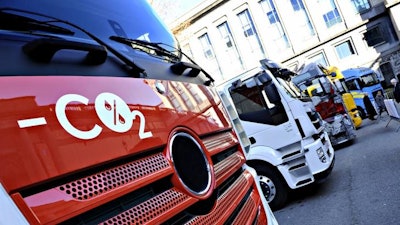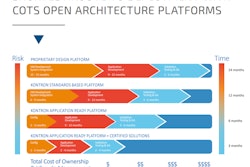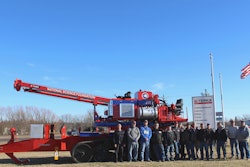
Europe’s major truck manufacturers take note of the common position on future CO2 standards for heavy-duty vehicles that EU environment ministers adopted at a Council meeting on the afternoon of December 20, 2018.
“Following the deal on stringent CO2 targets for cars that was reached earlier this week, we now see that the 28 members states are also backing very ambitious truck CO2 standards,” states Erik Jonnaert, Secretary General of the European Automobile Manufacturers’ Association (ACEA).
“Reducing CO2 emissions from trucks by 15% in 2025 and 30% in 2030, as proposed by the ministers today, will be a major challenge for industry and operators. What is possible for cars is often not an option for trucks – the difference between both is fundamental. Truck makers are willing to further cut carbon emissions but this should happen at a pace that is realistic, as it will not be possible with today’s technology alone.”
Indeed, these CO2 standards will require the rapid and large-scale market uptake of alternatively-powered trucks. “However, it remains highly questionable whether the needed charging and refuelling infrastructure suitable for trucks can be rolled out within the span of just a few years. Member states should also be aware of their responsibilities in this respect,” Jonnaert cautions.
If we take electric trucks, for example, the infrastructure is not the same as that used for electric cars and is simply missing today – using charging points for cars would take days. And even for LNG the available infrastructure is still patchy across Europe. Jonnaert says, “Clearly, we are talking about huge investments here. In parallel, transport operators will also have to renew their truck fleets at a much faster pace. All this must happen before 2025, but is outside the control of our industry.”
ACEA is particularly worried by the fact that these first-ever EU CO2 standards for trucks depend on a baseline that is yet to be determined. This means that individual truck makers will not know their specific targets before 2021. When considering that trucks that will be delivered to customers in 2025 are already under development now, the targets become even more challenging.
Given that this is the first time the EU sets CO2 standards for trucks, it is worrying that the sector would suddenly face disproportionally high penalties. Manufacturers are committed to continue investing in new fuel-efficient technologies and welcome the two-step approach agreed by the Council today, but the proposed amounts – even those for the first step – are way beyond reasonable and could severely jeopardize the industry’s competitiveness. Hence, the penalties need to be corrected, as they should be in line with the marginal costs of technology.
ACEA now calls on the member states, the European Parliament and the Commission to work towards a well-balanced regulation that is ambitious, yet realistic. If we want to further reduce CO2 emissions from trucks, we need a consistent framework that enables and supports the industry to deliver the necessary CO2 reductions.
Jonnaert says, “This essentially means making sure that the right conditions are in place to encourage the widespread deployment of zero- and low-emission trucks in terms of infrastructure, incentives and fleet renewal. At the same time, policymakers should not lose sight of transport operators’ needs nor the competitiveness of Europe’s truck industry.”



















